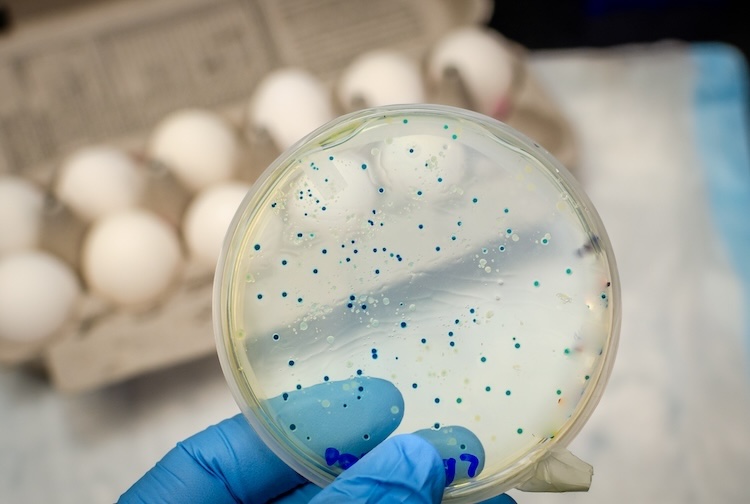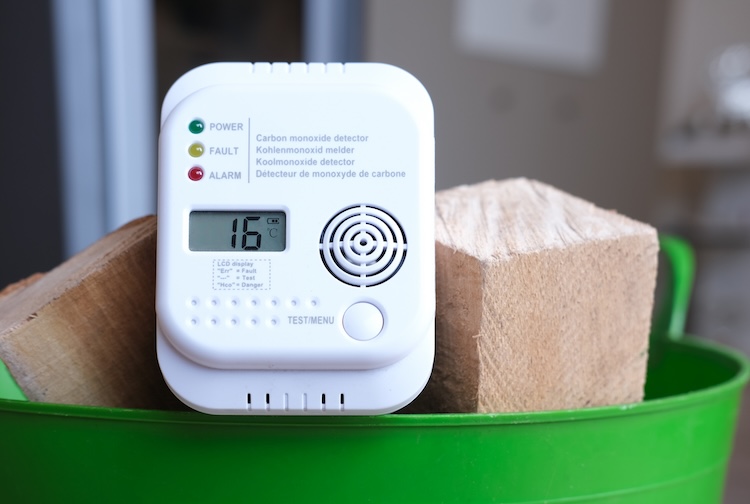
How to prevent salmonella from spreading
VCU Health expert Laura Pedersen, M.D, shares what you should know about the exposure, treatment, and prevention of the common foodborne infection.
September 24, 2024 In September 2024, the Centers for Disease Control and Prevention issued a food safety alert because of a salmonella outbreak in eggs (Getty Images).
In September 2024, the Centers for Disease Control and Prevention issued a food safety alert because of a salmonella outbreak in eggs (Getty Images).
By Mia Stephens
At least 65 cases of salmonella linked to contaminated eggs have been reported recently in nine states, including Virginia. Throughout the summer and early September, more than 20 people were hospitalized because of gastrointestinal illness from the infection.
The most common cases of salmonella in the United States are caused by a strain connected to foodborne pathogens, according to Laura Pedersen, M.D., MPH, an infectious disease expert at VCU Health. That means food, particularly undercooked or raw meats, eggs or poultry, has been contaminated, and the recent outbreak is connected to eggs of all types, case sizes and expiration dates recalled by the distributor Milo’s Poultry Farms LLC.
While most cases of salmonella are considered mild, some are deadly.
“Every year there are 1.35 million cases in the United States and 420 deaths,” Pedersen said. “Salmonella is more common in the summer and warmer months because the warm weather and unrefrigerated foods make great conditions for the bacteria to grow.”
VCU Health spoke with Pedersen about how you can get exposed to salmonella, symptoms to look out for, and the best ways to prevent it from spreading.
Besides diarrhea and vomiting, what other symptoms might be signs of salmonella?
In severe cases, these bacteria can spread into the urine, blood, bones, joints, and the brain, causing more severe symptoms. This kind of invasive infection happens in about 8% of cases, so it should be taken seriously.
Some of these symptoms include:
- Painful, swollen joints or severe back pain.
- Fevers and shaking chills.
- Increased frequency of urination, pelvic pain or pain with urination.
- Night sweats, general discomfort and chest pain.
Why do salmonella symptoms appear within just hours in some people – but days later for others?
The time between exposure to experiencing illness is called an incubation period. Typically, foodborne outbreaks have an incubation period of six to 72 hours. One major factor is how much someone was exposed to a virus or bacteria.
For example, salmonella on produce tends to be a lower dose than prepared foods. This is because prepared foods are at high risk for cross-contamination and have a higher likelihood of being stored at the incorrect temperature for longer.
At what point should someone contact their doctor or go to an emergency room?
People with mild to moderate symptoms – less than eight diarrheal stools a day, and who are able to stay hydrated – can usually recover at home by resting and drinking liquids. In fact, taking antibiotics when not necessary does not speed up recovery and can prolong the illness.
Nevertheless, if someone has over eight stools a day and/or diarrhea that is incapacitating, high fevers or symptoms of an extra-intestinal infection, they should seek medical treatment.
However, there are certain populations that should seek medical attention regardless of the severity of their symptoms, because they are at higher risk for developing a severe infection and would need antibiotics for treatment.
Those individuals include:
- Adults over 65 years old.
- Adults with atherosclerosis, a disease that causes cholesterol plaque in the walls of arteries to obstruct blood flow.
- People with prosthetic joints or severe joint disease.
- Those who are immunocompromised, such as people diagnosed with cancer or sickle cell disease.
- Infants, babies under 3 months old and young children.
What does treatment look like for salmonella? What is the average recovery time?
Mild to moderate cases of salmonella tend to resolve within three to seven days, even without treatment. If someone needs antibiotics, they may receive intravenous medication if they are unable to take pills.
If someone has recently traveled from Mexico, they may have a form of drug-resistant salmonella and may need a stronger antibiotic.
After having a gastrointestinal infection, some people may experience abnormal bowel movements for several months. Men ages 20 to 50 are highest risk for developing a non-infectious reactive arthritis that usually presents as an arthritis, pain with urination and conjunctivitis.
What are the best practices to prevent exposure to salmonella?
Washing your hands is imperative to prevent salmonella infections. That includes washing your hands before eating, after using the bathroom and after handling animals or their feces. Most importantly, you should practice good hand hygiene while preparing food. You can transfer salmonella if you’re not cleaning your hands properly between food preparation steps.
Any perishables, prepared foods or leftovers should also be refrigerated or frozen in two hours – or if it is under 90 F degrees outside, they should only be out for an hour. The Centers for Disease Control and Prevention refers to this as “clean, separate, cook and chill,” which is a great way to remember how to prepare and store food safely.
Another way to be exposed to salmonella is through animals. A perfectly healthy animal can shed salmonella in their stool and their coat, skin, etc. So, it is important to wash your hands after contact with animals and/or their food, water, feces, belongings such as bowls, and dwellings. Pet cages should be cleaned outside and never in a kitchen sink.



